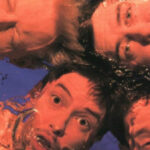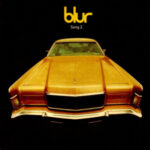In the rich tapestry of alternative rock, there exists a band that has quietly but consistently crafted a catalog of timeless melodies, harmonies, and introspective lyrics. Teenage Fanclub, hailing from Bellshill, Scotland, emerged in the late ’80s and became synonymous with the genre known as jangle pop. This article explores the sonic landscape of Teenage Fanclub, examining their musical evolution, impact on the alternative scene, and the enduring legacy of a band that has maintained a devoted following for decades.
Teenage Fanclub was formed in 1989 by Norman Blake (vocals, guitar), Raymond McGinley (vocals, guitar), Gerard Love (vocals, bass), and Francis MacDonald (drums). From the outset, the band displayed an affinity for melodic pop and harmonious arrangements. Their early influences included the Byrds, Big Star, and the Beach Boys, which laid the groundwork for the jangly guitar-driven sound that would become their signature.The band’s debut album, “A Catholic Education” (1990), showcased their raw energy and songwriting prowess. While the album hinted at the melodic brilliance to come, it also reflected the band’s early experimentation with noise and distortion. However, it wasn’t until their sophomore effort that Teenage Fanclub would solidify their identity.
The breakthrough moment for Teenage Fanclub arrived with their third album, “Bandwagonesque” (1991). The album was a critical and commercial success, earning widespread acclaim for its lush harmonies, catchy melodies, and impeccable songcraft. “Bandwagonesque” exuded a timeless quality, simultaneously drawing from the past and influencing the future.Tracks like “The Concept” and “What You Do to Me” exemplified Teenage Fanclub’s ability to marry infectious hooks with heartfelt lyricism. The album’s success was further solidified when it won the coveted “Best Album” award from British music magazine NME, beating out notable releases by Nirvana and My Bloody Valentine.
“Bandwagonesque” marked the apex of the jangle pop movement, and Teenage Fanclub found themselves at the forefront of a genre that prized melody, harmony, and an earnest approach to songwriting. The album’s influence resonated with a generation seeking an alternative to the angst-ridden grunge sound that dominated the early ’90s.
Following the success of “Bandwagonesque,” Teenage Fanclub continued to evolve their sound while maintaining their commitment to melody and harmony. The albums that followed, including “Thirteen” (1993) and “Grand Prix” (1995), showcased the band’s maturation and their ability to navigate different sonic landscapes. “Thirteen” delved into more introspective and emotional territory, exploring themes of love and heartbreak. The album maintained the band’s trademark harmonies but exhibited a slightly softer touch, revealing a depth to Teenage Fanclub’s songwriting that went beyond the jangle pop label. “Grand Prix” further solidified the band’s reputation as craftsmen of impeccable pop-rock. Songs like “Sparky’s Dream” and “Don’t Look Back” retained the infectious hooks that defined their earlier work while demonstrating a more refined approach. The album’s success in the UK and critical acclaim cemented Teenage Fanclub as a force to be reckoned with in the alternative music scene. Teenage Fanclub’s journey through the late ’90s and 2000s saw the departure of founding member Gerard Love but did not diminish the band’s commitment to their craft. Albums like “Songs from Northern Britain” (1997) and “Howdy!” (2000) continued to showcase the band’s ability to create music that transcended trends. “Songs from Northern Britain” displayed a more pastoral and reflective sound, with songs like “Start Again” and “Ain’t That Enough” epitomizing the band’s gift for crafting emotionally resonant and accessible tunes. As the years progressed, Teenage Fanclub maintained their consistency and earned the admiration of both critics and a loyal fanbase. In 2016, the band released “Here,” marking their eleventh studio album. The album reflected a continued commitment to their melodic roots while incorporating a more contemporary sound. Tracks like “I’m in Love” and “Thin Air” reaffirmed Teenage Fanclub’s enduring ability to produce music that felt simultaneously nostalgic and fresh. Teenage Fanclub’s influence on subsequent generations of musicians is undeniable. The band’s dedication to melody and harmonies has resonated across various genres, from indie rock to power pop. Artists such as Death Cab for Cutie, Teenagers in Tokyo, and The Pains of Being Pure at Heart have cited Teenage Fanclub as a significant influence on their own musical journeys. Moreover, the band’s impact on the indie scene has been felt in critical acclaim and fan devotion. Teenage Fanclub has maintained a dedicated following that spans decades, a testament to the timeless quality of their music and the emotional connection they forge with their audience. The enduring appeal of Teenage Fanclub lies not just in their hit singles but in the consistency of their entire discography. Each album contributes to a body of work that captures the band’s evolution, musical exploration, and commitment to crafting songs that stand the test of time. In the ever-evolving landscape of alternative rock, Teenage Fanclub stands as a beacon of melodic brilliance and sonic craftsmanship. From their jangle pop roots to their more introspective and mature offerings, the band has maintained a commitment to creating music that transcends trends and resonates with a deep emotional authenticity. Through the highs and lows of their career, the departures and evolutions, Teenage Fanclub has remained true to their musical vision. Their legacy is not just a collection of albums but a testament to the enduring power of harmony, melody, and the emotional resonance that music can evoke. As the band continues to shape their sonic narrative in the 21st century, Teenage Fanclub remains an influential force, reminding us that, in a world of constant change, some melodies are timeless, and the power of a well-crafted song can endure for generations.This post has already been read 208 times!










